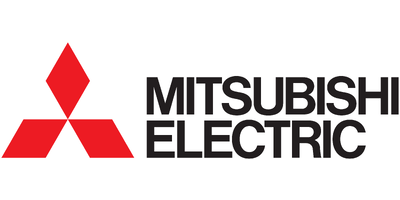CHEMTRONICS® MSDS #0217L
Page 1 of 2
SECTION 1: CHEMICAL PRODUCT AND COMPANY INFORMATION
Company Address:
8125 Cobb Center Drive
Kennesaw, GA 30152
Product Information: 800-TECH-401 Emergency: (Chemtrec) 800-424-9300
Customer Service: 800-645-5244 Revision Date: October 1, 2000
Produc t Identifi cation
ELECTRO-WASH
TWO-STEP (Liquid)
(Formerly Chem-Solv
)
Product Code: ES125A, ES125AC
SECTION 2: COMPOSIT ION/INFORMATION ON INGREDIENTS
Chemical Name CAS No. Wt. % Range
3-methoxy-3-methyl Butanol 56539-66-3 25.0-75.0
Dipropylene glycol methyl ether 34590-94-8 25.0-75.0
N-Methyl pyrrolidone 872-50-4 5.0-25.0
2-Butoxy ethanol 111-76-2 0.1-10.0
SECTION 3: HAZARD IDENTIFICATI ON
Emergency Overview:Clear, colorless liquid with hydrocarbon odor. This product is not flammable. Liquid will irritate eyes and skin under repeated or prolonged
exposure. Breathing high concentrations of product may produce drowsiness and a headache.
Potential Health Effects:
Eyes: Liquid, aerosols and vapors of this product are irritating and can cause pain, tearing, reddening and swelling accompanied by a stinging sensation.
Skin: Contact causes skin irritation. Symptoms may include redness and burning.
Ingestion: Harmful if swallowed. Large amounts may be irritating to the mouth, throat and stomach. May cause vomiting.
Inhalation: Harmful if inhaled. High concentrations in immediate area can displace oxygen and cause dizziness, unconsciousness and even death, with longer
exposure. Keep people away from such vapors without s elf-contained breathing apparatu s .
Preexisting Medical Conditions Aggravated by exposure: skin, eyes, liver, kidneys
SECTION 4: FIRST AID MEASURES
Eyes: Immediately flush with plenty of water. After initial flushing, remove any contact lenses and continue flushing for at least 1 5 mi n u t es . H ave eyes exa mi n ed
and tested by medical personnel if irritation develops or persists.
Skin: Wash skin with soap and water. Remove contaminated clothing. Get medical attention if irritation develops or persist. Wash clothing separately before reuse.
Ingestion: If swallowed, do not induce vomiting. Give lukewarm water to victim (pint) if victim is conscious and alert. Keep head below knees to minimize chance of
aspirating material into the lungs. Never give anything by mouth to an unconscious person. Get medical attention immediately.
Inhalation : Remove to fresh air. If not breathing, give artificial respiration. If breathing is difficult, give oxygen. Get medical attention.
SECTION 5: F IRE FIGHTING MEASURE S
Flash Point: 152°F LEL/UEL: Not established (% by volume in air)
Extinguishing Media: Use alcohol foam, carbon dioxide or water spray when fighting fires involving this material.
Fire Fighting Instructions: As in any fire, wear self-contained breathing apparatus (pressure demand, MSHA/NIOSH approved or equivalent) and full protective gear.
SECTION 6 : ACCIDENTAL RELEASE MEASURE S
Large Spills: Shut off leak if possible and safe to do so. Wear a self-contained breathing apparatus and appropriate personal protective equipment. Absorb spill with
inert material (i.e. dry sand or earth), then place in a chemical waste container for proper disposal. Do not flush to sewer. Avoid runoff into storm sewers and ditches
that lead to waterways.
Small Spills: Absorb spill with inert material (i.e. dry sand or earth), then place in a chemical waste container for proper disposal.
SECTION 7: HANDLING AND STORAGE
Avoid prolonged or repeated contact with skin, eyes or clothing. Wash hands before eating. Use with adequate ventilation. Avoid breathing product vapor. Do not
reuse this container. Store in a cool dry place, away from heat, sparks or flames. Keep container tightly closed when not in use. Do not store in direct sunlight.
KEEP OUT OF RE ACH OF CHILDREN.
SECTION 8: EXPOSURE CONTROLS/PERSONAL PROTECT I ON
Exposure Guidelines:
CHEMICAL NAME ACGIH TWA OSHA PEL ACGIH STEL
3-methoxy-3-methyl Butanol NA NA NA
Dipropylene glycol methyl ether 100 ppm 100 ppm 150 ppm
N-Methyl pyrrolidone NA NA NA
2-Butoxy ethanol 20 ppm (skin) 50 ppm (skin) NA
Work/Hygienic Practices: Good general ventilation should be sufficient to control airborne levels. Local exhaust ventilation may be necessary to control any air
cont amina nts to withi n their TLVs dur ing the use of this prod uct. Wear sa fety glasses with side shield s (or goggles) and ru bber or oth er chemica lly resist ant gloves
when handling this material.
NFPA and HMIS Codes: NFPA HMIS
Health 1 1
Flammability 1 1
Reactivity 0 0
Personal Protection - B
CHEMTRONICS® MSDS #0217L
Page 2 of 2
SECTION 9: PHYSICAL AND CHEMICAL P ROP ERTIES
Physical State: Clear, colorless liquid Solubility in Water: Negligible
Odor: Mild hydrocarbon solvent Specific Gravity: 0.962 @ 75 0F
pH: NA Evaporation Rate: <1 (Butyl acetate=1)
Vapor Pressure: <1 (Air = 1) Viscosity: >1 (Water =1)
Vapor Density: >1 (Air = 1) Percent Volatile: 75% (approx.)
SECTION 10: STABILITY AND REACTIVITY
Stability: This product is stable. Conditions to Avoid: Do not spray near open flames, red hot surfaces or other sources of ignition.
In compatibility: Do not mix powdered alkali and alkaline earth metals or strong oxidizing agents.
Products of Decomposition: Thermal decomposition may release carbon monoxide, carbon dioxide and incompletely burned hydrocarbons.
Hazardous Polymerization: Will not occur.
Conditions to avoid: NA
SECTION 11: TOXICOLOGICAL INFORMATION
Inhalation: Ingestion:
3-methoxy-3-methyl butanol* rats 500 ppm/ 28 days (No toxic effects noted) 3-methoxy-3-methyl butanol* LD50 rats 4300 mg/kg
2-Butoxy ethanol Human TCLo 100 ppm N-Methylpyrrolidone LD50 Rats 3914 mg/kg
N-Methylpyrrolidon e rat TCLo 150 ppm/6H 2-Butoxy ethanol Rat LD50 470 mg/kg
Dipropylene Glycol Methyl Ether rat 5135 mg/kg
Skin: Eye:
3-methoxy-3-methyl butanol* LD50 rats >2000 mg/kg 3-methoxy-3-methyl butanol* rabbit - MOD
N-Methylpyrrolidone LD50 rabbit 8,000 mg/kg N-Methylpyrrolidone Rabbit 100 mg MOD
Dipropylene Glycol Methyl Ether rabbit LD50 9500 mg/kg 2-Butoxy ethanol Rabbit 100 mg SEV
2-Butoxy ethanol Rabbit 500 mg Open; MLD Dipropylene Glycol Methyl Ether human 8 mg MLD
*Information obtained from manufacturer.
Cancer Information: No ingredients listed as human carcinogens by NTP or IARC
Reproductive effects: none Teratogenic effects: none Mutagenic effects: none
SECTION 12: ECOLOGICAL INFORMATION
Environmental Impact Information Environmental Impact Data
Avoid runoff into storm sewers and ditches which lead to (percent by weight)
waterways. Water runoff can cause environmental damage. CFC 0.0% VOC 100.0%
REPORTING HCFC 0.0% HFC 0.0%
US regulations require reporting spills of this material that Cl. Solv. 0.0% ODP 0.00
could reach any surface waters. The toll free number for
the US Coast Guard National Response Center is:
1-800-424-8802
SECTION 13: DISPOSAL CONSIDERATIONS
Dispose of in accordance with all federal, state and local regulations.
SECTION 14: TRANSPORTATION INFORMATION
Proper
Shipping Name
Air: and Ground: Cleaning compound n.o.i. Not Regulated.
SECTION 15: REGULATORY INFORMATION
SECTION 313 SUPPLIER NOTIFICATION
This product contains the following toxic chemicals subject to the reporting requirements of Section 313 of the Emergency Planning and Community Right-To- Know
Act of 1986 (40 CFR 372).
N-Methyl pyrrolidone CAS# 872-50-4 5.0-25.0%
This information should be included on all MSDSs copied and distributed for this material.
TOXIC SUBSTANCES CONTROL ACT (TSCA). All ingredients of this product are listed on the TSCA Inventory.
WHMIS: Class B3; C lass D2 B
This product has been classified according to the hazard criteri a of the CPR and the MSDS contains all of the information required by the CPR.
SECTION 16: OTHER INFORMATION
Do not puncture or incinerate containers. Normal ventilation for standard manufacturing practices is usually adequate. Local exhaust should be used when large
amounts are released.
REFERENCES: 29 CFR 1910.1200 40 CFR 300-700 ANSI Z400.1-1998
NIOSH RTECS provided by CHEM-BANK by SILVERPLATTER
Guide to Occupational Exposure Values 1997
To the best of our knowledge, the information contained herein is accurate. However, all materials may present unknown hazards and shou ld be used with caution. In
particular, improper use of our products and their inappropriate combination with other products and substances may produce harmful results which cannot be
anticipated. Final determination of the suitability of any material is the sole responsibility of the user. Although certain hazards are described herein, we cannot
gua r antee th at t hese a r e the only hazards that ma y exi st.



